Natural Capital
We strongly adhere to the principle that, ‘what benefits the society ultimately benefits our business.’ Guided by this ethos, we persist in investing in initiatives that support a culture of responsibility and accountability towards the environment.
Our initiatives elucidate our approach to managing and leveraging natural capital, showcasing our dedication to sustainable business practices and environmental stewardship.
Preserving Our Natural Capital: A Commitment to Sustainability at CTIL
As a Company deeply reliant on natural resources for raw materials, we recognise the critical role environmental stewardship plays in ensuring the longevity of our operations and the well-being of our planet. In response to the pressing challenges of climate change and environmental degradation, we have implemented a comprehensive array of initiatives aimed at conserving and enhancing our natural capital. By adopting responsible sourcing practices, reducing emissions, and developing innovative waste management solutions, we strive to preserve the integrity of our natural ecosystems while driving our business objectives.
Key Highlights
Water Withdrawal: 9% year-on-year reduction
Water Conservation: 49 water conservation initiatives in Pulp and Paper Segment
Energy Intensity: 12% year-on-year reduction
Renewable Electricity: 12% year-on-year increase
Water Discharge: 5% year-on-year reduction in Real Estate segment
Waste Management: 99% of waste diverted from disposal
ISO Certifications: ISO 14001:2015- Environmental Management System in Pulp and Paper Segment Installed green power in Birla Aurora and Birla Centurion
SDG Linkages
Key Material Topics Under Natural Capital:
ESG Incident and Risk Management
Energy and Emissions Management
Water and Wastewater Management
Waste Management
Linkages with NGRBC Principle:
Principle 2
Principle 6
Linkage with other capitals:

Financial Capital: The financial performance is intricately linked to natural capital, encompassing vital resources like land, forests, and minerals. These resources directly influence our Company’s economic outcomes.

Intellectual Capital: The wealth of knowledge concerning ecosystems, biodiversity, and natural processes forms the cornerstone of intellectual capital. This knowledge cultivates innovation, drives the development of new technologies, and inspires the adoption of sustainable practices.

Social and Relationship Capital: The preservation and access to natural resources play a pivotal role in fostering social cohesion, defending cultural values, and enhancing the overall quality of life within communities.

Manufacturing Capital: Natural capital functions as a primary source of raw materials for manufacturing processes. The sustained availability and responsible extraction of natural resources profoundly impacts manufacturing operations, supply chains, and the overall efficiency and sustainability of production systems.

Human Capital: Essential ecosystem services provided by natural capital, such as clean air, water, and food, are fundamental for human health and productivity, underlining the critical importance of maintaining these resources for the well-being of individuals and communities alike.
Preserving Nature, Powering Progress: Our Sustainable Journey Begins Here
At CTIL, we are devoted to combat climate change and deliver value to our stakeholders. By focusing on clean energy consumption, we remain faithful in our efforts to reduce greenhouse gas emissions. Additionally, we prioritise biodiversity conservation, recognising its critical role in maintaining ecological balance and resilience.
At present, 32% of our total energy consumption is sourced from renewable sources, emblematic of our resolute shift towards cleaner and more sustainable energy alternatives. Notable progress has been made in our sustainability endeavours, exemplified by a commendable 63% year-on-year reduction in Scope 2 emissions. With respect to waste management, our effective waste reduction and recycling initiatives have led to a remarkable diversion of 99% of waste from disposal. Conservation of water is equally vital to us. We have achieved a 9% year-on-year reduction in water withdrawal. Through the optimisation and exploration of innovative technologies, we aim to further diminish our water footprint. At our Real Estate segment, we have a robust biodiversity policy that guides our initiatives towards biodiversity conservation. In the Pulp and Paper segment, we are taking substantial steps towards tree plantation. In this financial year, we have planted 52.97 lakhs saplings across 2,414.3 hectares.
To ensure the efficacy of our climate change initiatives, we have established a specialised task force on energy, waste, and water. These task forces collaborate seamlessly across departments to devise and implement strategic measures in alignment with our sustainability objectives. With the help of our dedicated team, we are in a continuous quest to identify new avenues for improvement.
Furthermore, we uphold a robust governance framework to meticulously monitor and evaluate the progress of our environmental endeavours, ensuring a trajectory of continuous improvement.
Green Focus: Building on Four Key Pillars
Aligned with our sustainable practices, we have prioritised four key pillars - namely, energy efficiency, emission reduction, water stewardship, and waste management. With our untiring green focus, we aim to contribute to a more sustainable future while positively impacting the environment and the communities we serve.

Energy efficiency:
We are dedicated to implementing mechanisms for energy-saving and reduction in energy consumption, bolstering our efforts towards radical and adaptive actions aimed at enhancing energy efficiency across operations.
Goal:
To improve energy efficiency in operations across all business segments.

Emission reduction
We are continuously working towards clean energy usage in our operations and emission reduction measures across the value chain remains a top priority, as we diligently work towards the decarbonisation of our business operations.
Goal:
To reduce greenhouse gas emissions across all business segments.

Efficient waste management
Embracing the principles of the 3Rs—Reduce, Reuse, Recycle; we are committed to effective waste management practices. By integrating these principles into our operations, we aim to create a greener and more sustainable future while minimising waste generation and promoting resource efficiency.
Goal:
To achieve zero waste to landfill and implement measures for reusing waste across all segments over time.

Effective water stewardship
Recognising water as precious natural capital, we place great importance on conserving and reusing water across our on-site operations and the surrounding areas. Our ongoing efforts focus on not only reducing our water consumption, but also reduction in wastewater and its treatment before release to minimise our environmental footprint.
Goal:
To make water stewardship a core value in all segments, enhancing water efficiency across operations.
Key Pillars

With a significant dependency of the world economy on fossil fuels, ensuring a consistent and clean energy supply is imperative for all enterprises. Across our diverse business segments, we employ the most energy-efficient production practices, thereby contributing to energy conservation efforts.
To uphold transparency and accountability, we are continuously and rigorously monitoring and reporting systems and processes across all business segments. These systems enable precise tracking and analysis of our energy consumption patterns, facilitating the identification of areas with heightened energy usage. Armed with this comprehensive data, we are further improving our existing strategies and initiatives aimed at driving reductions in energy consumption.
Moreover, we recognise the importance of engaging our employees and stakeholders in energy conservation endeavours. Through targeted programmes and initiatives, we promote awareness and cultivate a culture of sustainability within our Company, ensuring that every individual contributes to our collective goal of a greener future.
Each of our business segments employs unique approaches to fulfil their energy needs and implements strategies for energy conservation. The below trends show how our efforts have helped in reducing our energy consumption and energy intensity.
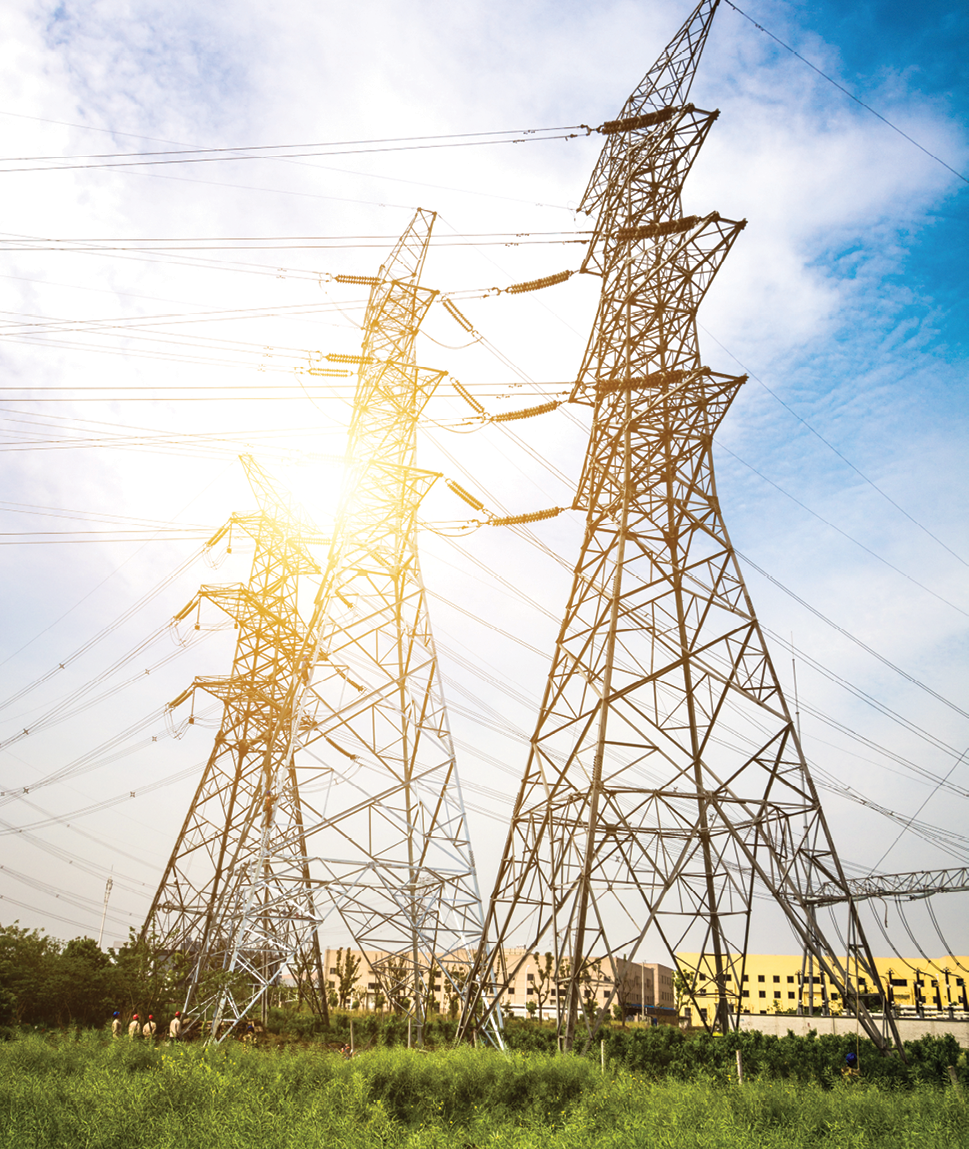
CTIL Energy Consumption Trends
| Year | Non-Renewable (TJ) | Percentage (%) | Renewable (TJ) | Percentage (%) | Total Energy Consumption (TJ) |
|---|---|---|---|---|---|
| FY 2023-24 | 10,775.08 | 68 | 5,075.50 | 32 | 15,850.58 |
| FY 2022-23 | 9,542.1 | 60 | 6,458.27 | 40 | 16,000.37 |
| FY 2021-22 | 9,906.41 | 59 | 6,884.12 | 41 | 16,790.53 |
Real Estate:
Energy is a vital component to our Real Estate business, playing a critical role in construction and leasing activities. Energy is needed to power large devices, instruments, and tools used during construction and in the management of leased facilities. The Real Estate segment has implemented many energy saving and energy efficiency programmes across its operations. All our commercial buildings are entirely powered by renewable energy. This initiative has significantly reduced carbon emissions across our operations.

Initiatives for Green Energy
We have adopted multiple green energy measures at our residential and commercial buildings.
Pioneering Green Solutions
This year our major focus was on green energy. We have taken major efforts across our buildings which includes the installation of photovoltaic cells.
Here are the key initiatives implemented at selected buildings:
Birla Aurora has achieved a remarkable 100% transition to green energy, while Birla Centurion has made significant progress with a 38% shift. Together, these efforts have reduced CO2 emissions in our commercial properties by 43%. In addition to this, both the properties have installed EV charging infrastructure to support sustainable transportation.
At Birla Tisya, we have been generating renewable energy, averaging 900kWh per month.
We have also installed Photo Voltic Cells to power the path lights at the Birla Vanya.
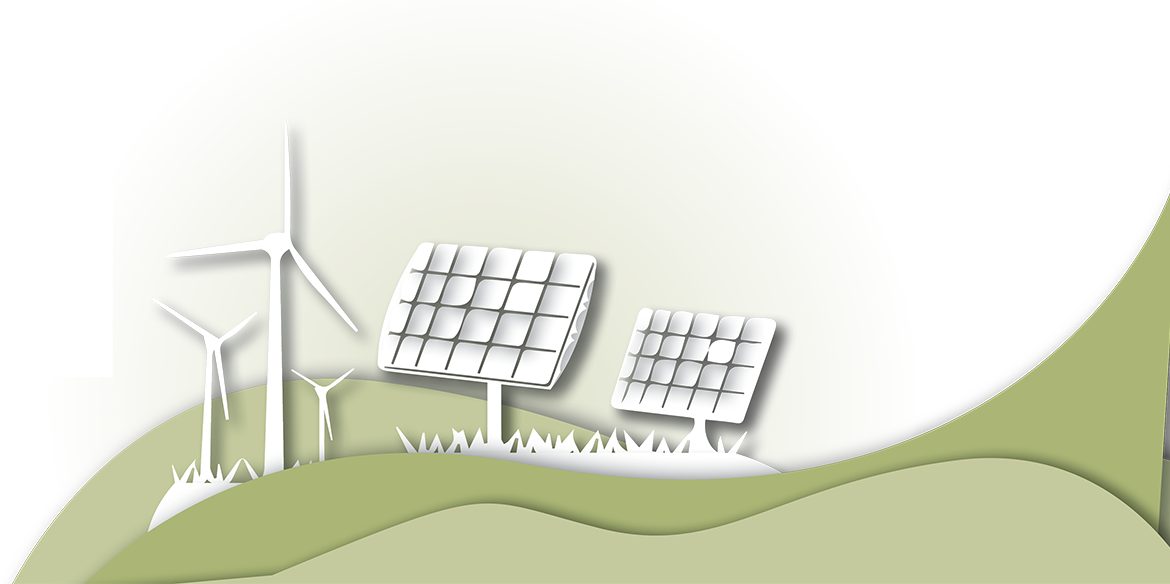
Pulp and Paper:
Our Pulp and Paper segment embraces a diverse energy strategy, encompassing various sources such as High-Speed Diesel (HSD), coal, Liquefied Petroleum Gas (LPG), and renewables like solar power and some of the notable steps towards using biomass such as, Compressed methane gas (CMG), wood bark, pith, black liquor, perul etc. Our energy-saving initiatives encompass the implementation of various measures, such as integrating a new evaporator, installing a new head box, and employing air agitators throughout different processes. We have also worked towards installing energy-efficient technologies and enhancing operational processes through improvements in traps, valve passing, and insulation.
Our energy management system is structured around the Perform, Achieve, and Trade (PAT), enabling us to monitor, evaluate, and improve our energy performance compared to baseline levels. We meticulously track various energy parameters which helps us in identifying areas for improvement and implementing targeted measures to optimise energy usage. Moreover, 34% of our energy needs are produced internally from renewable fuels including biomass and solar electricity.

Case Study
CMG - Energy Efficient Solution
In our pursuit of sustainable energy solutions, we have innovatively utilised Compressed Methane Gas (CMG), generated from the waste produced from our operations. This initiative significantly reduces Liquefied Petroleum Gas (LPG) consumption. By using CMG for air drying, we are moving towards minimising our environmental footprint and boosting our operational efficiencies.
Impact of Evaporator System Upgrade
To boost energy efficiency and meet future production needs, we have installed an advanced evaporator system to enhance our evaporation capacity. This upgrade has resulted in a notable increase in our Steam Economy and has concurrently amplified steam generation at the boiler, facilitated by higher black liquor solid content.


We diligently monitor Scope 1 and Scope 2 emissions across project sites, manufacturing plants, and office buildings. The primary contributors to Scope 1 emissions across the business segments are the different fuels utilised for energy, including coal, gasoline, HSD, natural gas and LPG.
We utilise the GHG protocol for accounting our carbon footprint. In calculating these emissions, we have used the emission factors provided by both the Intergovernmental Panel on Climate Change (IPCC) and the Central Electricity Authority (CEA) for Scope 1 and Scope 2 emissions, respectively.
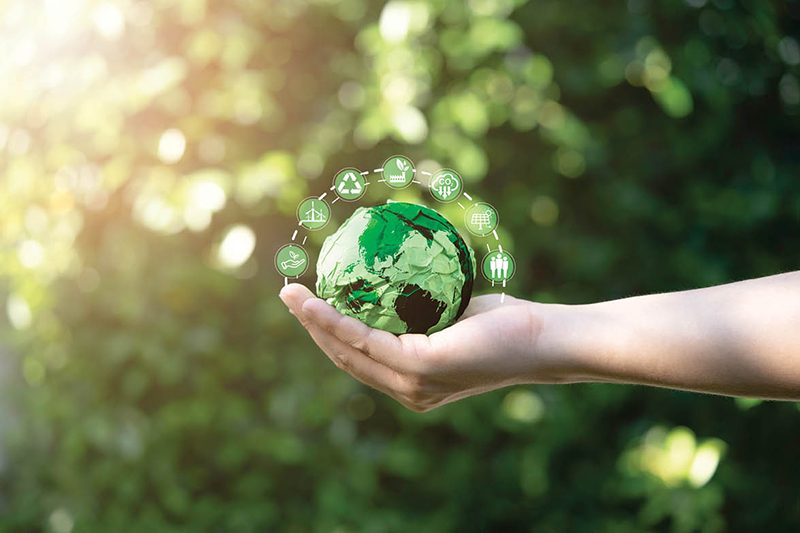
Note: There is a marginal increase in emission intensity compared to FY 2022-23 due to increase in the share of conventional energy in the Pulp and Paper segment.
Moreover, during the reporting period, we have emitted 8.10 kg of CFC-11 equivalent ozone-depleting substances (ODS). This includes 6.27 kg of CFC-11 equivalent from the use of R-22 and 1.83 kg of CFC-11 equivalent from R-123. These emissions were calculated based on the quantities of ODS used and their respective Ozone Depletion Potentials (ODP), referred from the Handbook on Data Reporting under Montreal Protocol by United Nations Environment Program (UNEP) Division of Technology. We are committed to reducing our ODS emissions and are exploring alternatives to these substances to minimise our environmental impact by replacing R-22 and R-123 with zero ODS refrigerants.
Real Estate:
Amidst growing concerns about climate change and environmental sustainability, our commitment to reducing GHG emissions remains persistent. As part of our ongoing efforts, we have quantified our GHG Emissions for our Real Estate business segment.

Highlighted Story: Reducing Embedded Carbon Emissions
Fortifying Structures, Reducing Emissions with GGBS
In FY 2023-24, Birla Estates prioritised sustainability by integrating 2,440 MT of Ground Granulated Blast Furnace Slag (GGBS) into construction projects, leading to a significant reduction in CO2 emissions. This conscious decision not only enhanced the strength and durability of the concrete but also minimised thermal cracking, ensuring the long-term integrity of our structures.
In line with our commitment to environmental sustainability in the Pulp and Paper segment, we have undertaken significant measures to lower our GHG emissions.
The utilisation of clean fuel like CMG which is generated from our Bio-Methanation plant has contributed to our overall emissions reduction goals. These efforts have effectively reduced our thermal energy consumption.
Despite our efforts there has been an increase in emission intensity that can mainly be attributed to a decrease in renewable fuel consumption. This decline in renewable fuel usage correlates with heightened imports of pulp, consequently reducing black liquor production.
Emissions other than GHG Emission
All our business segments strictly adhere to the air emissions guidelines set by regional and central regulatory bodies. Robust monitoring systems have been implemented across all our operations to accurately track key pollutants such as oxides of nitrogen and sulfur (NOx, SOx), and particulate matter. To ensure compliance with legal criteria regarding air quality, all boiler stacks and kilns are equipped with state-of-the-art Electrostatic Precipitators (ESP) technology.
| Parameter | Unit | FY 2023-24 | FY 2022-23 | FY 2021-22 |
|---|---|---|---|---|
| Oxides of Nitrogen (NOx) | MT | 581.42 | 866.16 | 744.45 |
| Oxides of Sulphur (SOx) | MT | 234.79 | 365.85 | 271.99 |
| Particulate Matter (PM) | MT | 740.77 | 730.30 | 469.97 |

Waste management emerges as a fundamental aspect of our environmental commitment. At CTIL, we are committed to minimising waste generation and maximising resource efficiency as part of our broader integration of circular economy principles. Through innovative strategies and proactive initiatives, we are reshaping our approach to waste, with a focus on reducing, reusing, and recycling resources wherever possible.
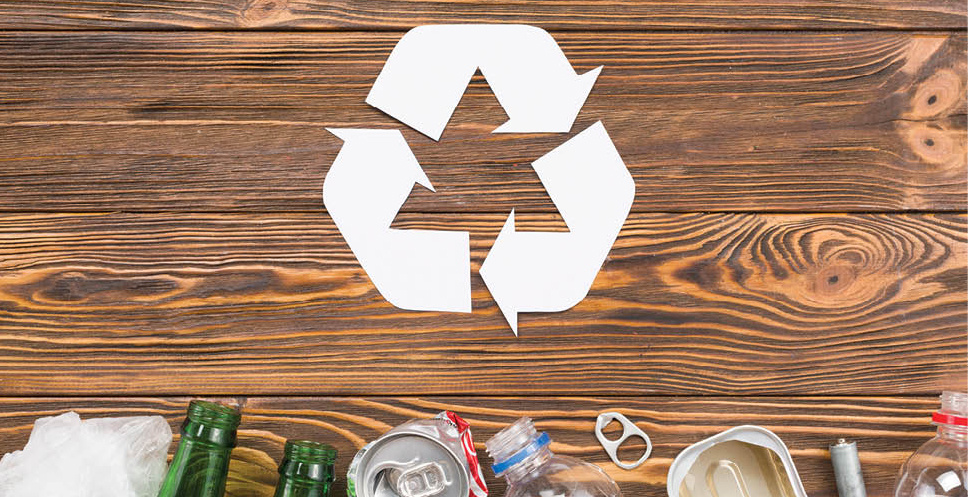

3R Excellence: Shaping Sustainable Waste Solutions
Waste Reduction:
Throughout our business segments, we have deployed diverse strategies to pinpoint avenues for waste reduction. Within the Real Estate segment, the adoption of sustainable construction methods and waste management systems aims to diminish both construction and operational waste, while the Pulp and Paper segment prioritises refining production processes with technological advancements to curtail overall waste production.
Resource Reuse:
Throughout our operations, we actively encourage the reuse of materials and resources. In the Pulp and Paper segment, sawdust, bark, and used oil are reused as fuel for the lime kiln and boiler. In Real Estate, Construction and Demolition (C&D) wastes are being reused in road construction and refilling.
Recycling:
Our commitment to waste reduction is demonstrated through various recycling initiatives. In the Pulp and Paper segment, the ETP sludge is used for board manufacturing and the fly ash from it is sent to cement industry. At our residential and commercial sites, we have installed organic waste converters to manage organic waste and convert it into manure used for plantation purposes.
Our efforts are guided towards building a sustainable future, preserving resources, and reducing our ecological impact which we are achieving by conforming to the reduce, reuse, and recycle (3R) waste management principles.
Waste Generation by CTIL
Total waste generated:
| Year | Type of Waste | Total Waste Generated (MT) | Total waste Diverted from Disposal (MT) | Total Waste Directed to Disposal (MT) |
|---|---|---|---|---|
| FY 2023-24 | Non-Hazardous | 3,47,868.03 | 3,88,220.18 | 5,331.53 |
| Hazardous | 45,664.28 | |||
| Total | 3,93,532.31 | |||
| FY 2022-23 | Non-Hazardous | 2,93,099.30 | 2,90,982.84 | 3,356.03 |
| Hazardous | 1,239.37 | |||
| Total | 2,94,338.67 | |||
| FY 2022-23 | Non-Hazardous | 2,93,566.69 | 2,92,374.99 | 1,932.95 |
| Hazardous | 741.24 | |||
| Total | 2,94,307.94 |
Waste Management Journey: Divergence and Disposal
In our ongoing efforts towards environmental stewardship, we have continued to divert 99% of the waste generated from disposal. Guided by our 3R’s Philosophy, our initiatives have enabled us to divert waste from landfills. For example, in the Real Estate segment, we repurpose the construction and demolition waste in different construction activities. Similarly for our Pulp and Paper segment, most of the waste generated (such as pith, sawdust, etc.) is repurposed as fuel to power the operations.
Real Estate:
Waste management is highly important to us, and we incorporate environmentally conscious practices into every project at all levels in our Real Estate segment. Starting at the design phase, we have implemented effective mechanisms for the responsible disposal of both solid and liquid waste. Our objective is to implement zero liquid discharge systems at the design stage. We utilise STP to treat wastewater, and the treated water is subsequently repurposed for gardening and flushing, thereby minimising water wastage. This approach has resulted in no liquid discharge from the Real Estate segment’s offices in the current financial year. Additionally, we prioritise sustainability by repurposing topsoil excavated during construction for landscaping purposes and ensuring the appropriate management and disposal of any remaining soil. Waste generated during the construction phase, whether hazardous or non-hazardous, including municipal waste, is stored, managed, and disposed of on-site.

Case Study
Maximising Resource Efficiency through Comprehensive Waste Management
At our commercial operations, we utilise organic waste converters to transform various organic waste materials such as leftover vegetables, meat, bread, leaves, fruit, and fruit skins into valuable compost. This compost serves as a vital resource for organic farming operations, contributing to sustainable gardening practices. In addition to organic waste converters, we implement various other waste management practices on-site, ensuring that all recyclable waste is managed responsibly by authorised recyclers.
Recycled Concrete Aggregates for Sustainable Construction
Within our residential operations, recycled concrete aggregates are used in making PCC (Plain Cement Concrete) for construction purposes. This strategy reduces the quantity of waste dumped in landfills and eases the strain on the environment. Reusing old concrete not only lessens the demand for fresh resource extraction but also reduces the environmental damage caused by resource extraction and transportation.
Pulp and Paper:
In our waste management practices at the Pulp and Paper segment, we employ various strategies to ensure the efficient diversion and utilisation of waste materials. Solid waste, consisting primarily of dust, dirt, and saw dust, is incinerated in the boiler. The fly ash, generated during operations, is utilised by the cement industry through our circular economy approach. Notably, we have successfully diverted all waste generated by us away from landfills. Additionally, black liquor, a byproduct of our processes, is utilised in the recovery boiler to generate steam.
Responsible Material Consumption
At CTIL, we prioritise responsible consumption of materials, striving to minimise waste and maximise resource efficiency across our operations. By implementing innovative technologies, adopting eco-friendly production processes, and promoting recycling and reuse, we ensure that our material consumption is both responsible and sustainable.
At CTIL, we remain dedicated to incorporating renewable materials as a significant portion of our overall material usage. Out of the total material used which is 20,38,275.51 MT, 23% materials are recycled.
Real Estate:
In our Real Estate segment, we prioritise sourcing raw materials locally, within a 500Km radius. Our operations are committed to promoting the use of recycled resources, including recycled concrete, glass, sustainable building materials etc. thereby reducing our reliance on virgin materials. Additionally, we ensure that low Volatile Organic Compound (VOC) paints are utilised in our projects to uphold environmental sustainability.
Pulp and Paper:
Our Pulp and Paper segment primarily utilises a variety of raw materials including wood, bamboo, bagasse, pulp, recycled paper etc. We remain committed to adhering to the Forest Stewardship Council (FSC®) guidelines, ensuring that our wood sourcing practices avoid questionable origins such as historic and endangered forests.

Recognising the prevalent water scarcity challenges in the society, we are actively addressing water conservation and stewardship. We have taken a proactive approach towards identifying potential risks related to water availability and implemented water conservation measures. In addition, we have set targets aimed at limiting water discharge, withdrawal, and consumption to ensure responsible water usage throughout our operations.
Mindful Utilisation of Water as a Shared Resource
As a Company, we recognise that water is a shared resource and advocate its judicious use. Consequently, water management initiatives are undertaken by our business segments. Each business tailors its actions to fulfil the water requirements by aligning with specific needs and operational circumstances.
In the Real Estate segment, our water procurement strategy encompasses a diverse range of sources, encompassing surface water, and third-party supplies. Within the Pulp and Paper segment, we use groundwater. We place a strong emphasis on the sensible utilisation of these water resources sustainability. Through efficient water management practices, we strive to minimise water consumption while maintaining the highest standards of sustainability.
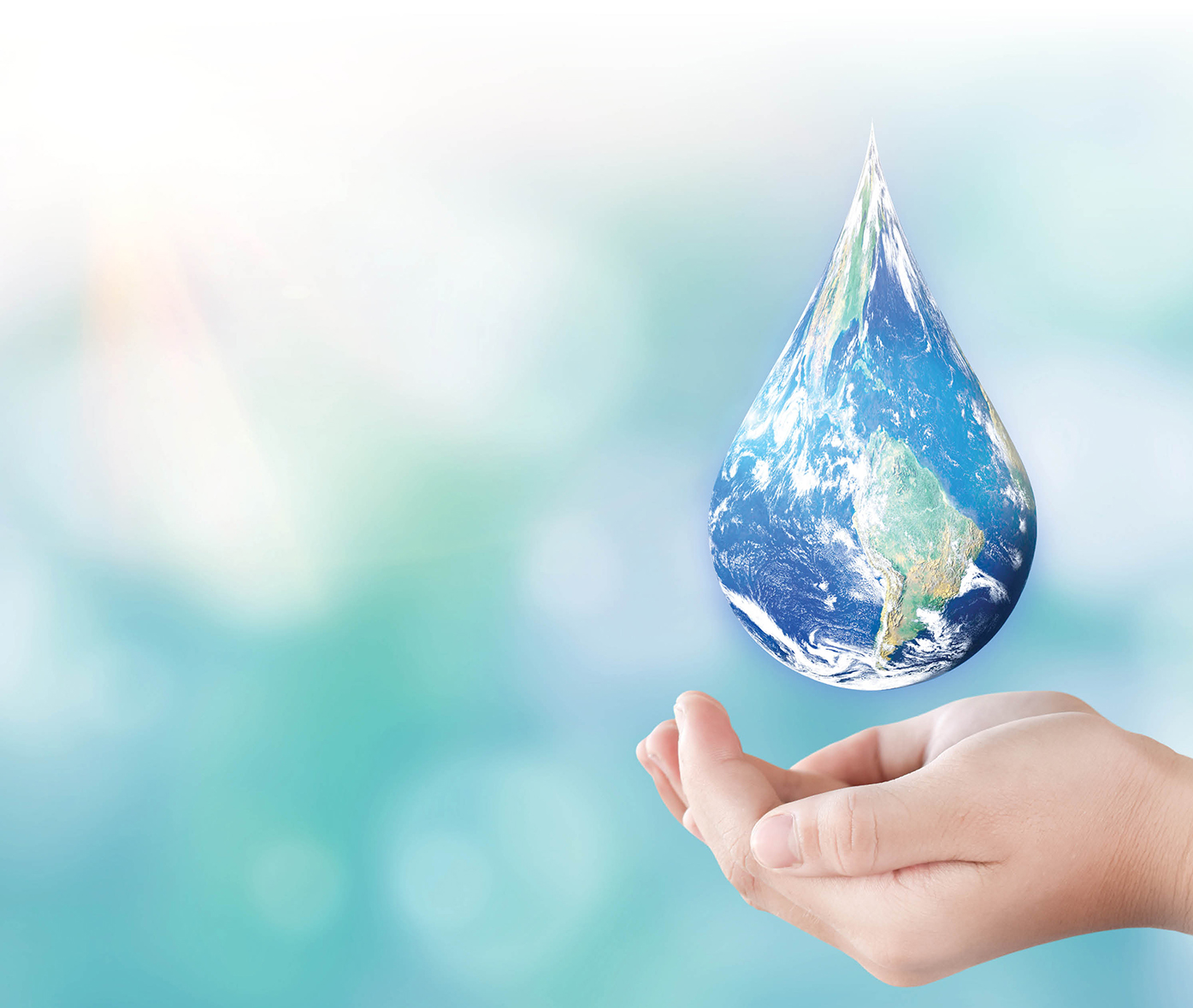
Water Management at CTIL
| Water Parameters for All Areas | |||
|---|---|---|---|
| Parameter | FY 2023-24 | FY 2022-23 | FY 2021-22 |
| Water withdrawal by source (in KL) | |||
| Surface water | - | 6,72,886.80 | 7,56,290.34 |
| Groundwater | 1,20,29,001.00 | 1,32,06,081.05 | 1,40,07,839.15 |
| Third party water | 6,90,032.20 | 71,938.00 | 49,538.77 |
| Total water withdrawal (in KL)* | 1,27,19,033.20 | 1,39,50,905.85 | 1,48,13,668.26 |
| Total volume of water consumption (in KL) | 1,27,19,033.20 | 1,92,61,415.85 | 2,05,53,479.26 |
| Water discharge by source (in KL) | |||
| Surface water | 78,47,476.00 | 82,99,391 | 88,28,383 |
| Total volume of water Discharge (in KL)** | 78,47,476.00 | 82,99,391 | 88,28,383 |
| Water intensity (kl/ lakhs ₹) | 23.90 | 40.81 | 50.52 |
* The TDS of water withdrawal is below 1000 mg/l
** The TDS of water discharge is in between 1500-2000 mg/l in Pulp and Paper segment.
| Water Parameters for Areas with Water Stress | |||
|---|---|---|---|
| Parameter | FY 2023-24 | FY 2022-23 | FY 2021-22 |
| Water withdrawal by source (in KL) | |||
| Surface water | - | - | - |
| Groundwater | - | 20,009.09 | 10,529.15 |
| Third party water | 38,103.20 | 12,340.00 | 6,143.00 |
| Total water withdrawal (in KL) | 38,103.20 | 32,349.09 | 16,572.15 |
| Total volume of water consumption (in KL) | 38,103.20 | 32,349.09 | 16,672.15 |
| Water discharge by source (in KL) | |||
| Total volume of water Discharge (in KL) | - | - | - |
Real Estate:
As we continue to grow our business and expand operations within the Real Estate segment, it is essential to recognise the increasing demand for water. We have set up STPs at all our sites and the treated water is used for secondary purposes. Rainwater harvesting structures have been implemented across all projects. Over the course of the past three financial years, the segment has introduced innovative water reuse and recycling initiatives, resulting in substantial improvement in the amount of water recycled.

Case Study
Sustainable Curing solutions
Curing is critical for enhancing the strength and durability of concrete structures. By carefully maintaining optimal moisture and temperature conditions during the initial hardening phase, curing ensures the concrete achieves its full potential. Water is traditionally utilised for curing, serving to prevent moisture loss and facilitate proper hydration of the cementitious materials. However, our commitment to sustainable practices has led us to embrace innovative solutions such as curing compounds. These liquid membrane-forming materials, diligently applied to freshly poured concrete, act as a shield against premature moisture evaporation. This not only promotes improved hydration but also significantly reduces the reliance on water for curing. As a result, our utilisation of curing compounds not only enhances concrete performance by reducing plastic cracking, shrinkage, and surface dusting but highlights our dedication to environmentally conscious construction practices, minimising water usage while maximising structural integrity.
Efficient Water-Saving Solution
In both residential and commercial projects, we are striving for 100% recycling of water for activities like gardening, right from the design stage. For instance, at our labour camp in Birla Tisya, Bengaluru, domestic sewage is treated on-site and then transported via tankers to use in the construction activity, exemplifying our commitment to using treated STP water. In the fiscal year 2024 alone, we have utilised 4.2 million litres of treated STP water. Reuse of STP water reduces reliance on freshwater withdrawal, promoting sustainable water management practices.
Pulp and Paper:
Water is an indispensable component and a vital input material in the papermaking process. Recognising its significance, the Pulp and Paper segment has implemented a range of measures to monitor its water-related impacts. Leveraging innovative technologies, we aim to tackle the emerging challenges posed by water scarcity while actively contributing to the preservation of this crucial resource. Our plant has a low specific water consumption as compared to industry standards, owing to our relentless focus on water retreatment and conservation initiatives. 55% of our water requirement is met through recycled water.
Major Water Saving Activities
| Activity | Approx. Water saving Achieved |
|---|---|
| Reuse from Chemical Recovery Plant | 100M3/Hr. |
| Reclamation of stock back water and reuse in Chipper & Chips Washing | 150 M3/Hr. |
| Recycling of bleaching stage back water | 100M3/Hr. |
| Recirculation of sealing water | 150M3/Hr. |
| Recovery of cooling & sealing water from Bagasse | 100M3/Hr. |
| Reclamation of stock back water and reuse for Bagasse Wash Plant | 100M3/Hr. |
Water Discharge
Through increased effluent recycling, we have effectively minimised discharge volumes from our operations. This proactive water management not only benefits our operations but also contributes to local ecosystem and water resource preservation. Leveraging advanced recycling methods, we have boosted wastewater recovery and treatment capabilities, leading to significant reductions in effluent discharge and environmental impact.


We prioritise harmonious coexistence with nature and sustainable development as core values. By integrating biodiversity considerations into our daily activities, we aim to improve the long-term health of ecosystems while balancing nature and business needs.
For biodiversity preservation, we carefully plan and execute activities to avoid disrupting protected areas and regions with significant biodiversity. Adhering strictly to 'Green Building' standards ensures our projects uphold environmentally sustainable practices.
We actively cultivate local plants and shrubs in our green spaces, avoiding invasive species and supporting biodiversity and groundwater replenishment. None of the IUCN (International Union for Conservation of Nature) Red List species have been impacted by our activities.
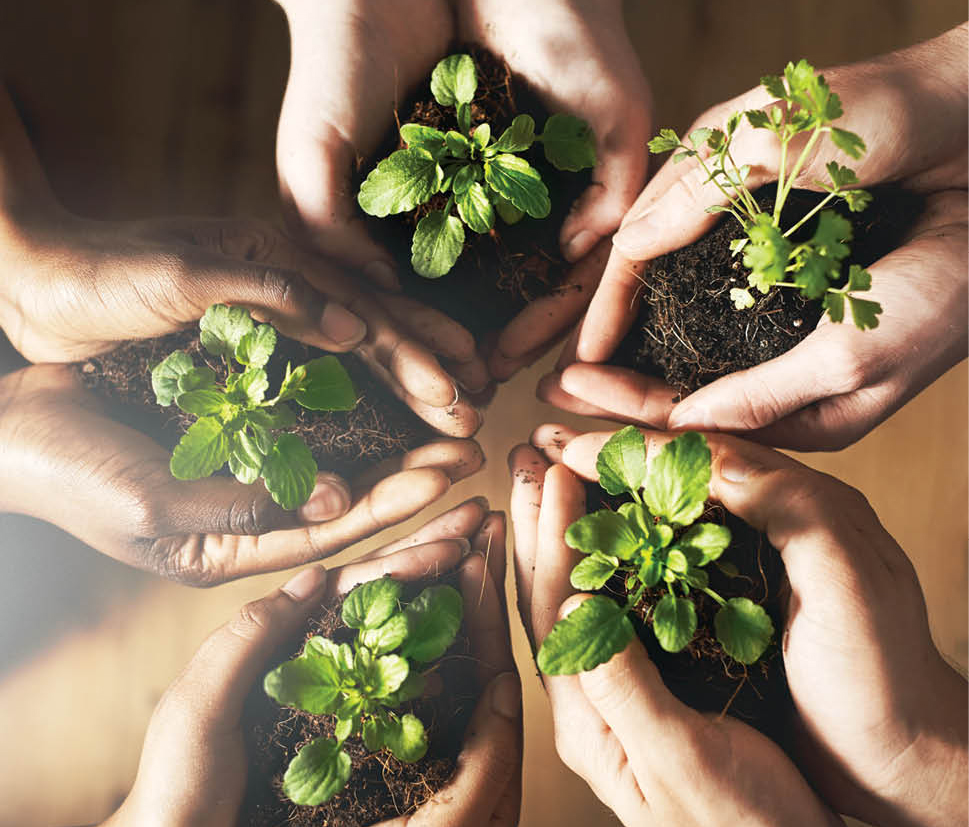
Real Estate:
At our Real Estate business segment, we prioritise the preservation of biodiversity, fostering thriving ecosystems on our premises. This not only maintains ecological equilibrium but also supports community well-being and enhances the aesthetic appeal of our locations. Central to our dedication is an extensive Biodiversity Policy, seamlessly integrating conservation with sustainable practices. Key aspects of our policy include incorporating a minimum of 80% native species into our projects and proactively protecting endangered flora and fauna. We aim to cultivate an environment that promotes biodiversity, enriches local ecosystems, and sustains the vitality of our projects.

Case Study
Biodiversity Enhancement
Our Real Estate segment prioritises biodiversity enhancement, right from project acquisition, nurturing native species while deterring invasive processes. To ensure the effectiveness of our efforts, we conduct thorough studies of flora, fauna, and biodiversity by collaborating with external research bodies. For instance, we are currently conducting a comprehensive biodiversity study within a 10 kms radius for one of our projects with a specific focus on conserving the nearby river ecosystems. Over the next 3-6 months, we are working towards compiling a detailed biodiversity database to guide our future projects. This structured approach allows us to maintain a consistent and impactful biodiversity enhancement strategy across all our endeavours.
The biodiversity study encompasses:
Landscape Assessment
A meticulous examination of the landscape's characteristics, including terrain, vegetation, and geological features are used to paint a holistic picture of the ecosystem's composition and structure.
Habitat Analysis
Delve into the diverse habitats present within the site, from forests and wetlands to grasslands and water bodies, to identify key ecological niches and their significance in supporting biodiversity.
Flora and Fauna Inventory
An exhaustive inventory of species inhabiting the area, spanning native, exotic, vulnerable, and invasive species, shedding light on the richness and diversity of the local biodiversity.
Pulp and Paper:
Our Pulp and Paper segment has taken significant strides towards biodiversity enhancement through the initiative of the plantation of samplings undertaken in the financial year. In FY 2023-24 alone, we planted 53 lakhs saplings across 2,414.3 hectares. The Company’s overarching aim is to become wood positive, by steadily increasing plantation efforts each year to meet our total wood requirements without relying on external sources.
Furthering our commitment to biodiversity conservation, we have established 12 Amrit Sarovars, which serve as water source for wildlife in the region. We also actively collect dry leaves from forests, thereby mitigating the risk of forest fires and creating employment opportunities for local women. In the realm of farm forestry, we have set ambitious targets to plant 100 lakh seedlings. To ensure the survival rates of these plantations, we have adopted a multifaceted approach. This includes planting more trees, providing training to farmers in 80 decentralised nurseries, offering Forest Research Institute (FRI) certified seeds, and purchasing wood from farmers at rates above market price. This integrated approach involves the collaboration of 80 leading farmers and promotes intercropping, thereby providing additional income opportunities.
Recognising Innovative Green Cover Development
We are proud to announce that we have been honoured with the prestigious Quality Circle (QC) Rudrapur Chapter Award for our innovative approach to developing green cover through plantation. We are proud to announce that we have been honoured with the prestigious Quality Circle (QC) Rudrapur Chapter Award for our innovative approach to developing green cover through plantation. Our approach prioritises various key objectives, including enhancing carbon sequestration, producing in-house raw materials, minimising environmental impact, and reducing our reliance on external sources for raw materials. This accolade serves as a testament to our dedication to fostering a greener and more sustainable future through pioneering initiatives in the field of environmental conservation.
Way Forward
At CTIL, we fully recognise the importance of natural capital and its pivotal role in our business operations, as well as its broader impact on society and the environment. Year after year, we are working towards implementing proactive measures aimed at mitigating negative impact across the two segments of our business.
In our approach to natural capital, we consistently surpass legal requirements and compliance standards. We understand that by safeguarding and enhancing natural resources, we ensure the long-term viability of our Company, drive innovation, and generate benefits for all stakeholders involved. Through partnerships with key stakeholders, we believe we can collectively address challenges posed by declining biodiversity, climate change, and resource shortages, paving the way for a future where natural capital is respected, preserved, and restored.
Our Company has made significant strides in improving its natural capital across various fronts, achieving notable progress so far. Our focus remains on making our facilities self-sufficient through renewable energy while enhancing energy efficiency and reducing reliance on fossil fuels. Looking forward, we are committed to continuing this journey, enhancing our natural capital, and contributing to a more sustainable future.























